20 Animals That Have Skills Humans Can Only Dream Of
Nature has crafted abilities in the animal kingdom that make superhero powers look tame by comparison. While humans celebrate technological breakthroughs, many creatures possess natural capabilities that science still struggles to understand, let alone replicate.
From microscopic marvels to ocean giants, these animals demonstrate how extraordinary evolution can be.
Pistol Shrimp’s Sonic Gun
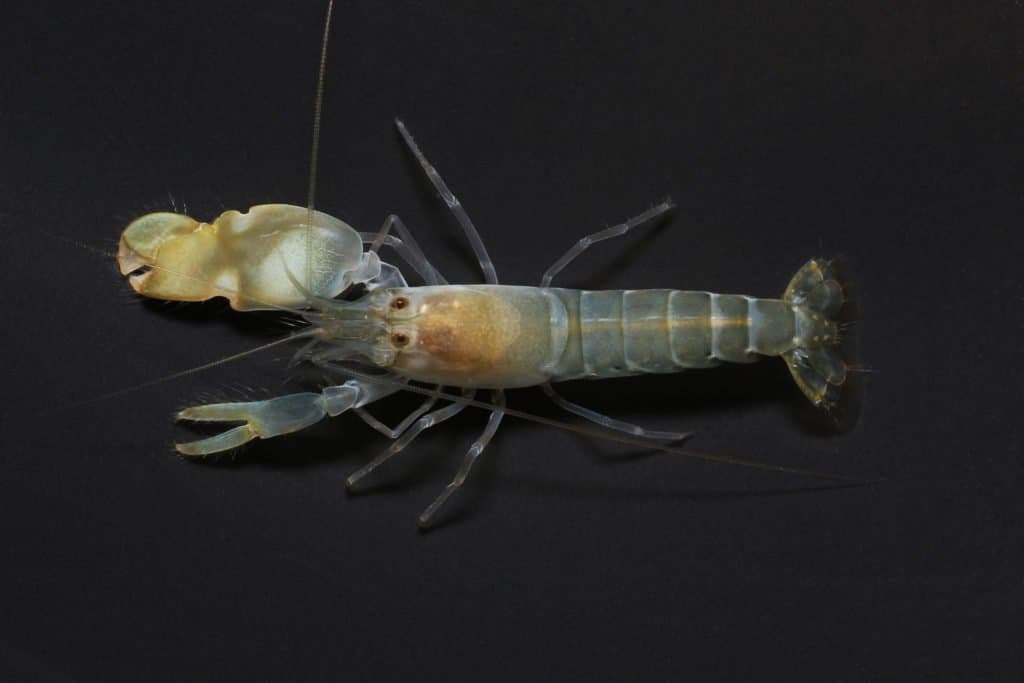
Deep beneath the waves lurks a tiny shrimp with the power to create sonic booms. The pistol shrimp’s oversized claw snaps shut with such force it creates a bubble that, when it collapses, generates temperatures nearly as hot as the sun’s surface and a shockwave that can stun or kill small prey.
This remarkable weapon produces a sound reaching 210 decibels underwater – louder than a gunshot. The bubble created by the claw snap, called a cavitation bubble, collapses at 60 miles per hour and generates a flash of light through sonoluminescence.
Scientists discovered that colonies of snapping shrimp can interfere with submarine sonar and underwater communication systems. During World War II, their collective clicking provided cover for submarines hiding from enemy sonar.
Some species coordinate their snaps to stun larger prey, demonstrating remarkable collective hunting behavior.
Tardigrade’s Immortality Trick
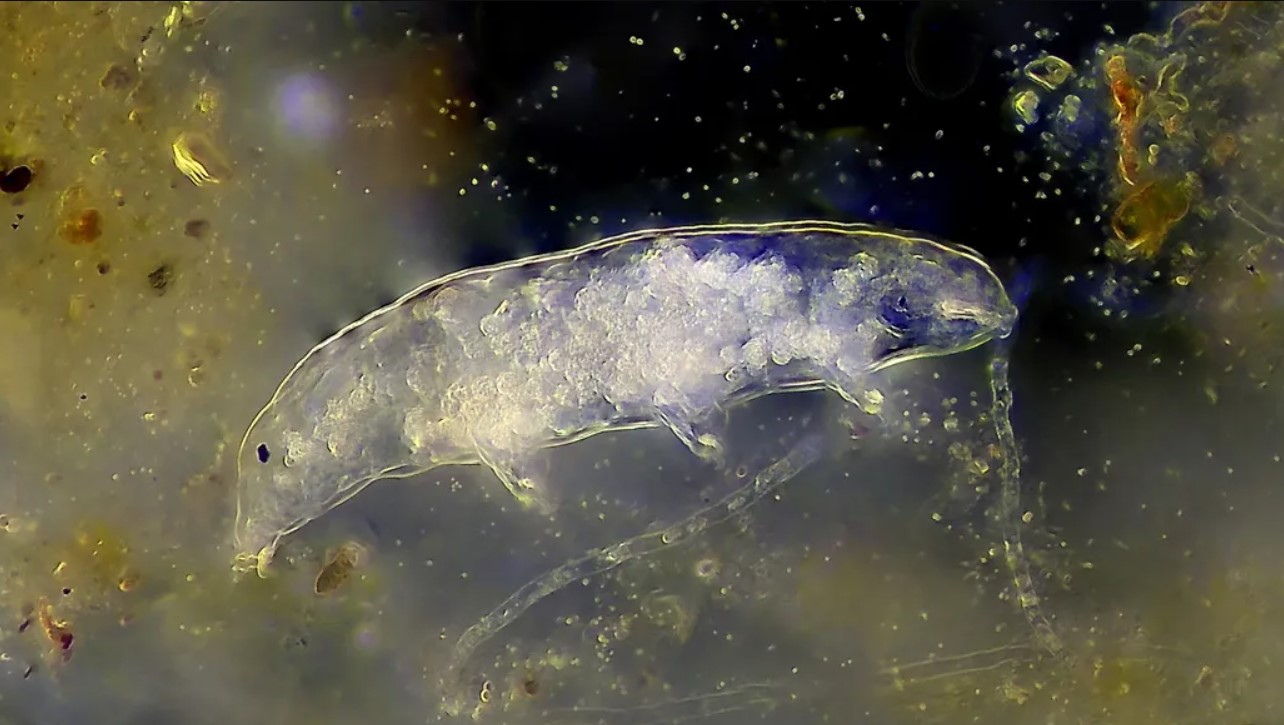
These microscopic “water bears” laugh in the face of conditions that would obliterate most life forms. Tardigrades survive the vacuum of space, temperatures near absolute zero, pressures six times greater than the ocean’s deepest point, and radiation levels a thousand times higher than lethal doses for humans.
They can dehydrate completely, shutting down all metabolic processes for decades, then spring back to life with a drop of water. Scientists discovered that tardigrades possess unique proteins called Dsup (Damage suppressor) that protect their DNA from radiation and other environmental stresses.
When exposed to extreme conditions, they enter a state called cryptobiosis, where their metabolism drops to less than 0.01% of normal. In 2019, thousands of dehydrated tardigrades crashed on the moon during a failed lunar mission.
Researchers believe some might have survived the impact, potentially making them the first Earth creatures to colonize another celestial body.
Like Go2Tutors’s content? Follow us on MSN.
Electric Eel’s Living Battery
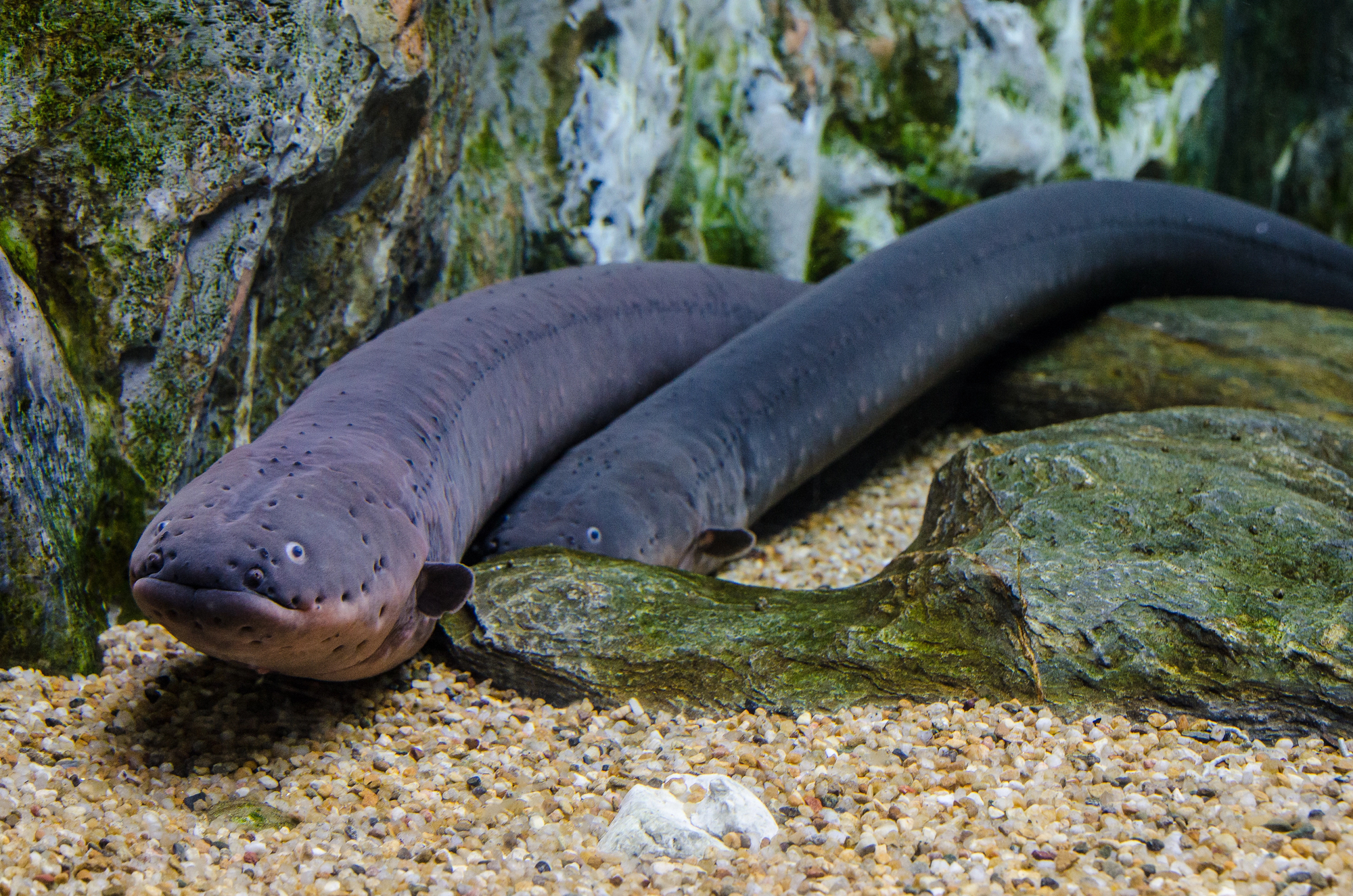
Electric eels generate enough electricity to power ten light bulbs. Their specialized cells, called electrolytes, stack like batteries in series, producing shocks up to 860 volts.
These remarkable creatures can control their electrical output, using lower voltages to navigate and track prey and higher voltages to stun or kill. Recent studies revealed electric eels possess three different electric organs, each serving distinct purposes.
More remarkably, they can curl their bodies to double the voltage of their shock, a behavior only recently documented. Scientists have used insights from electric eel biology to develop new types of power sources and bioelectric devices.
In the Amazon, these creatures sometimes leap from the water to directly shock threats, including humans and horses.
Mantis Shrimp’s Rainbow Vision
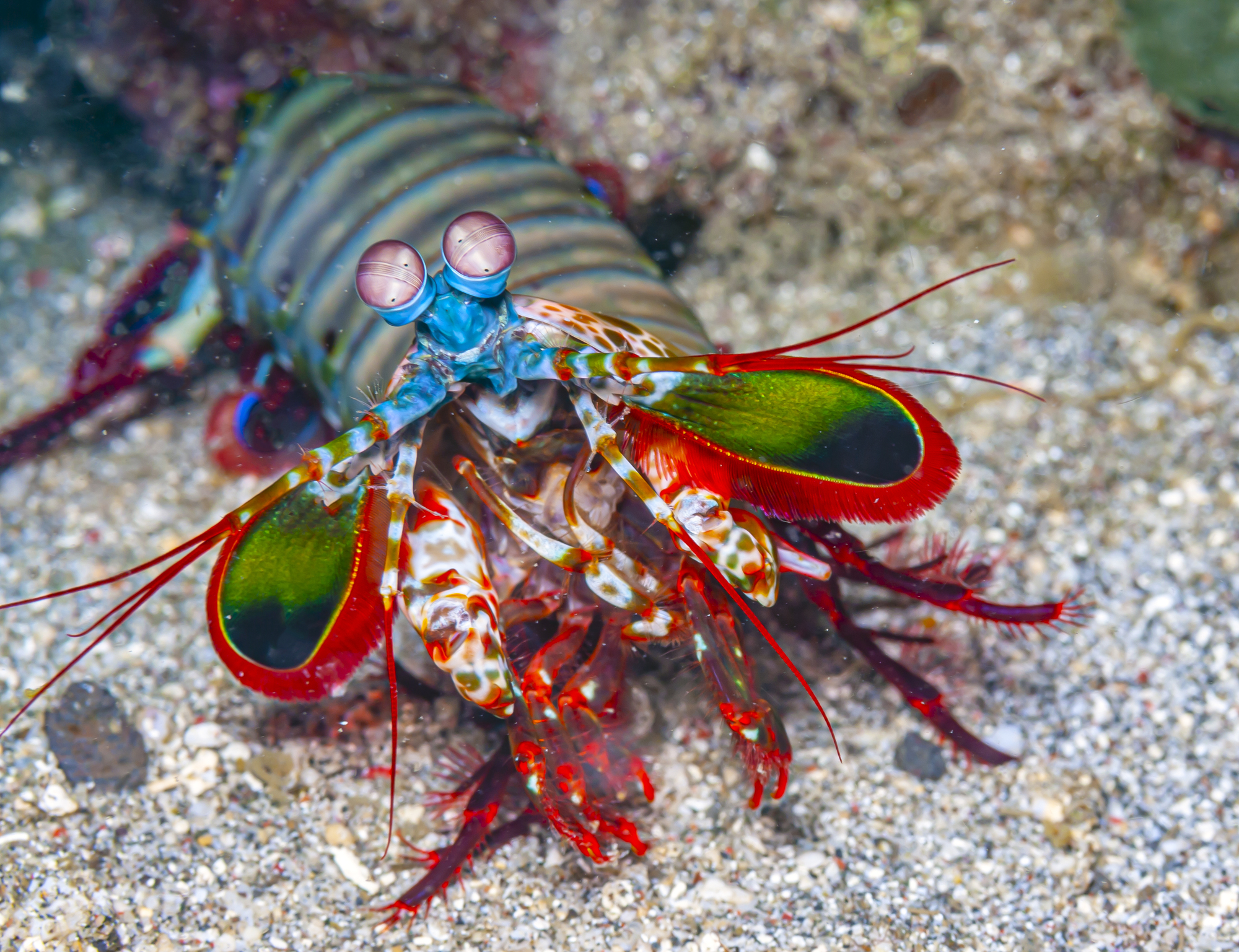
While humans see three colors, mantis shrimp perceive twelve distinct wavelengths of light, including ultraviolet. Their eyes sit on mobile stalks and can move independently, each having three pupils.
These remarkable hunters can also see polarized light and circular polarization – a skill no other animal possesses. Each eye contains 16 color receptors compared to humans’ three and processes visual information differently from other animals.
Their punch moves so fast it creates cavitation bubbles like those of the pistol shrimp, reaching speeds of 50 mph and accelerating faster than a 0.22 caliber bullet. The force can break aquarium glass, and their ability to see circularly polarized light has inspired new designs for optical devices and DVD players.
Sloth’s Energy Efficiency
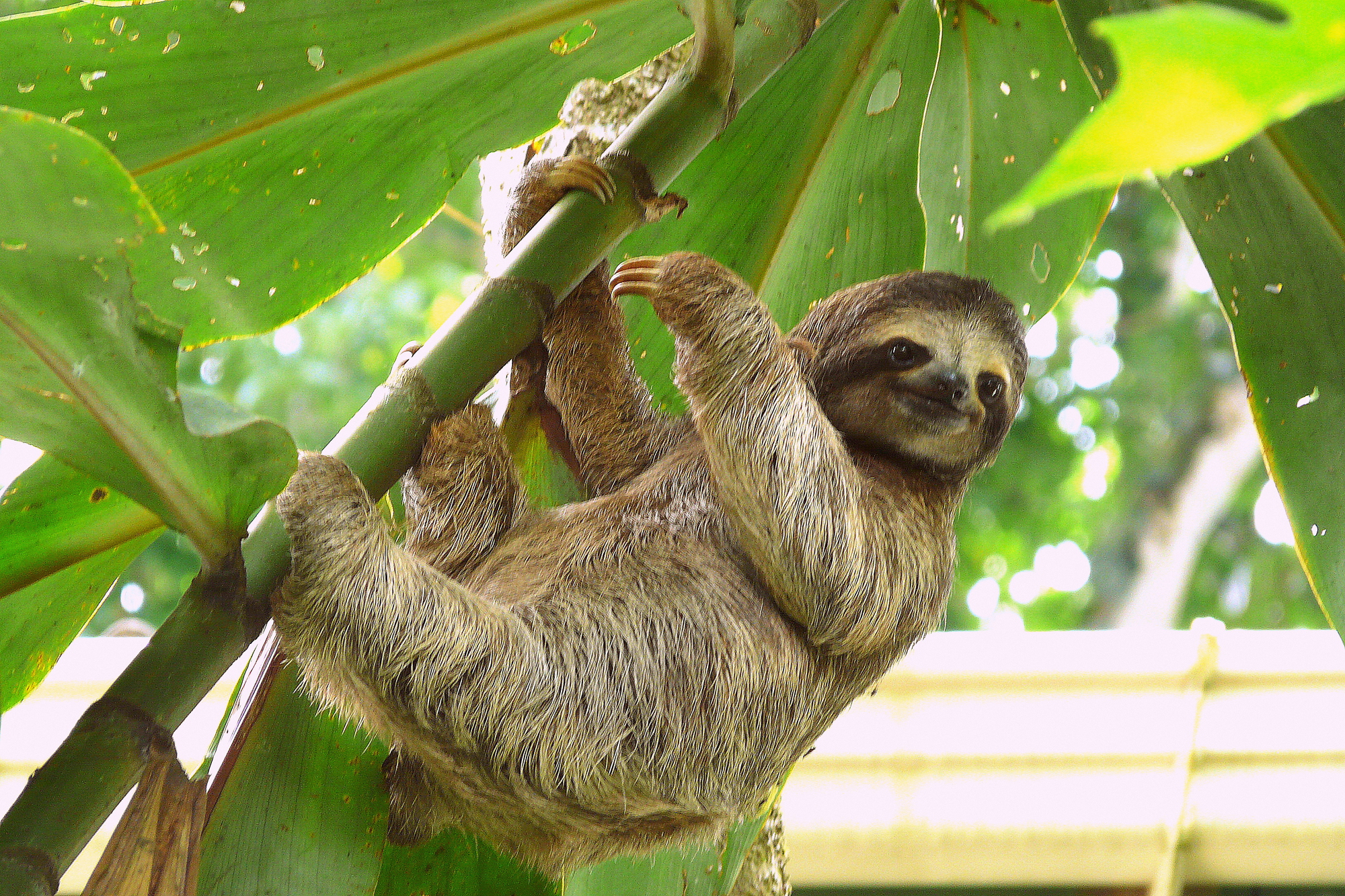
Masters of energy conservation, sloths operate on an incredibly slow metabolic rate. Their specialized digestive systems extract maximum nutrition from leaves while using minimal energy.
These remarkable creatures move so slowly that algae grow in their fur, creating camouflage and a symbiotic relationship that provides additional nutrients. A sloth’s metabolism runs at only 40-45% of the rate expected for their body weight. T
heir multi-chambered stomachs can take up to a month to digest a single leaf, and they descend from their trees only once a week to defecate. The algae in their fur host entire ecosystems of moths, beetles, and other insects while also providing camouflage and potentially anti-cancer compounds that scientists are currently studying.
Like Go2Tutors’s content? Follow us on MSN.
Alpine Ibex’s Gravity Defiance
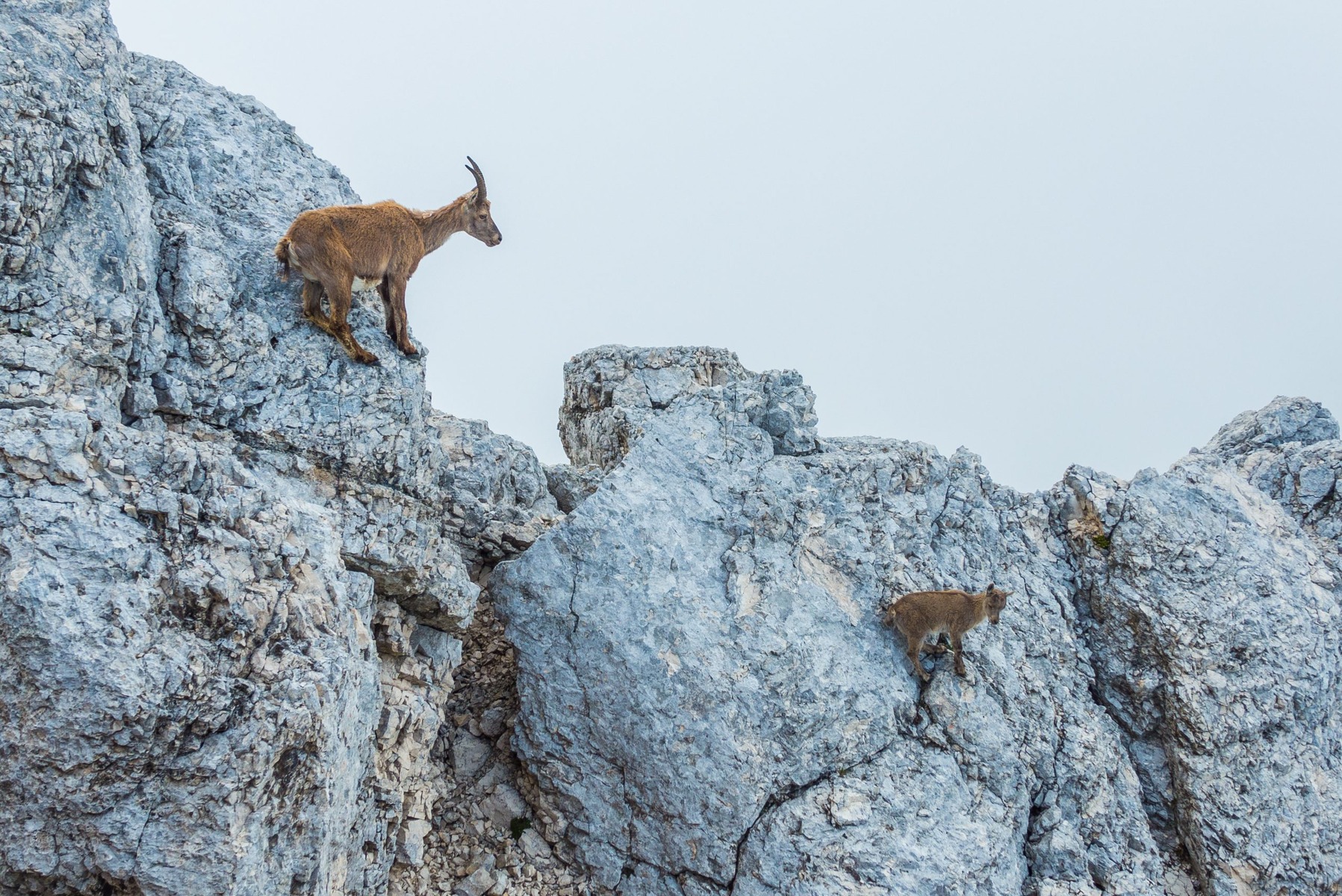
These mountain goats scale nearly vertical dam walls to lick essential minerals from the stones. Their split hooves can spread for better grip, while soft rubbery pads provide incredible traction.
Alpine ibex climbs at angles that would challenge professional rock climbers with modern equipment. Their hooves consist of two toes that can spread wide for balance, with rough textured pads that act like high-performance climbing shoes.
Young ibex often proves more skilled at climbing than adults, capable of scaling near-vertical surfaces of 85 degrees or steeper. Their specialized tendons and muscles allow them to exert huge forces through their legs while using minimal energy, enabling them to cling to tiny ledges for extended periods.
Sperm Whale’s Deep Diving
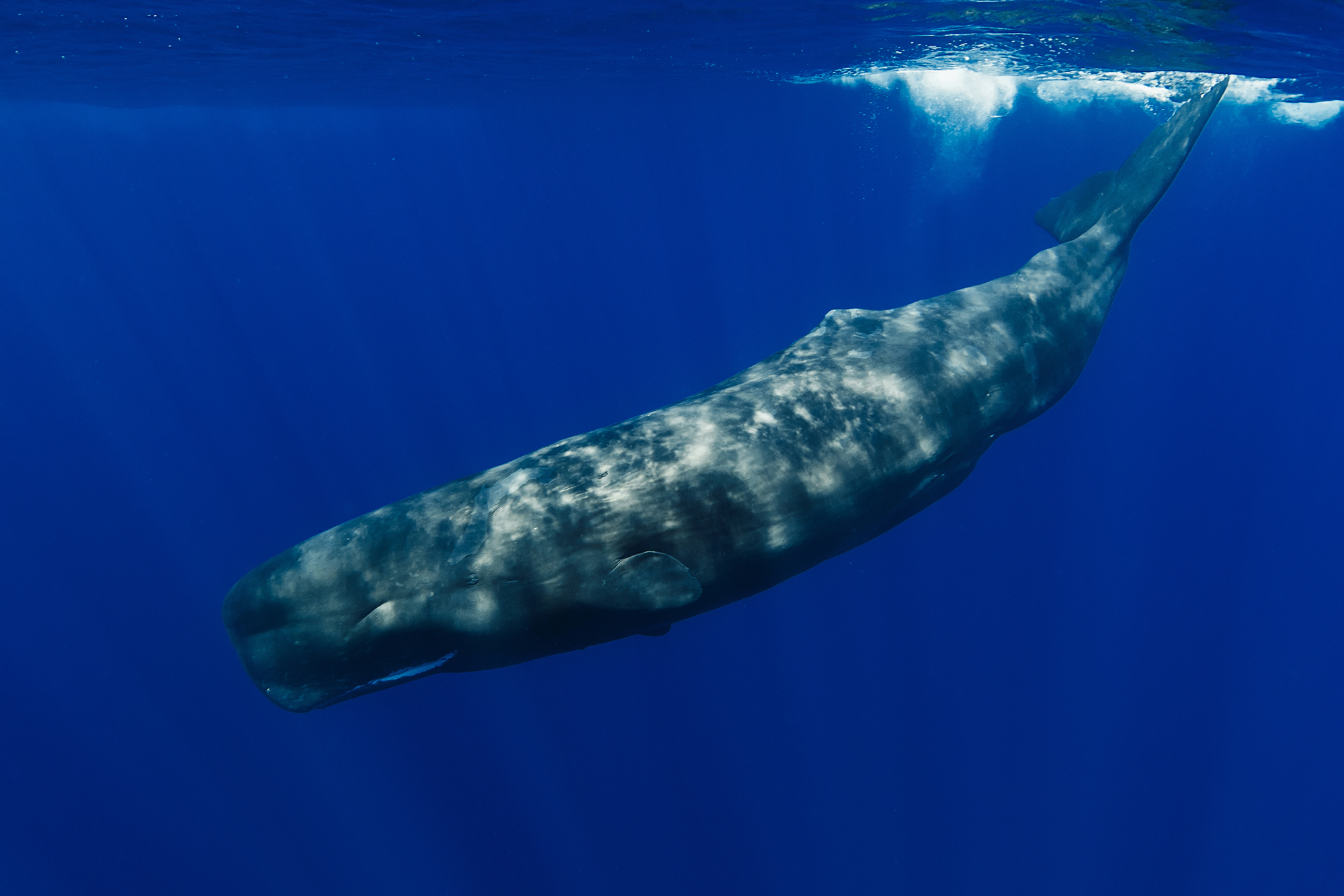
These marine mammals plunge deeper than any other air-breathing creature, reaching depths of 2,000 meters. Their specialized physiology allows them to collapse their lungs, slow their heart to a few beats per minute, and redirect blood flow to essential organs.
They hunt in darkness using the most powerful natural sonar known to science. To achieve these incredible dives, sperm whales’ muscles contain high levels of myoglobin, storing oxygen for long periods underwater.
Their unique skull shape focuses on powerful sound waves used for echolocation, generating sounds louder than a jet engine. Recent research shows they might use these sound waves to stun prey at depth physically.
Their complex social structure includes distinct clicking patterns that serve as regional dialects among different whale groups.
Platypus’s Sixth Sense
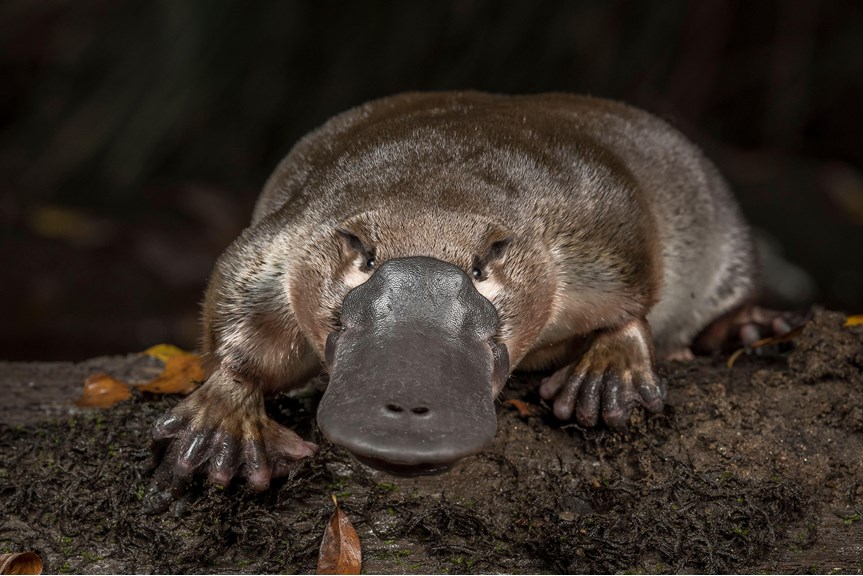
These bizarre creatures detect electrical signals from their prey’s muscular movements through electroreceptors in their bills. The platypus can find food with its eyes, ears, and nose all closed, using this sixth sense to navigate and hunt in murky waters.
They’re among the few mammals that can sense electrical fields. Their bills contain over 40,000 electroreceptors combined with over 60,000 mechanoreceptors, making them incredibly sensitive to both electrical fields and physical touch.
Male platypuses also possess venomous spurs on their hind legs, making them one of the few venomous mammals. During hunting, they can detect electrical signals as small as 50 millionths of a volt, equivalent to a 1.5-volt battery detected from 10,000 miles away.
Like Go2Tutors’s content? Follow us on MSN.
Peregrine Falcon’s Speed
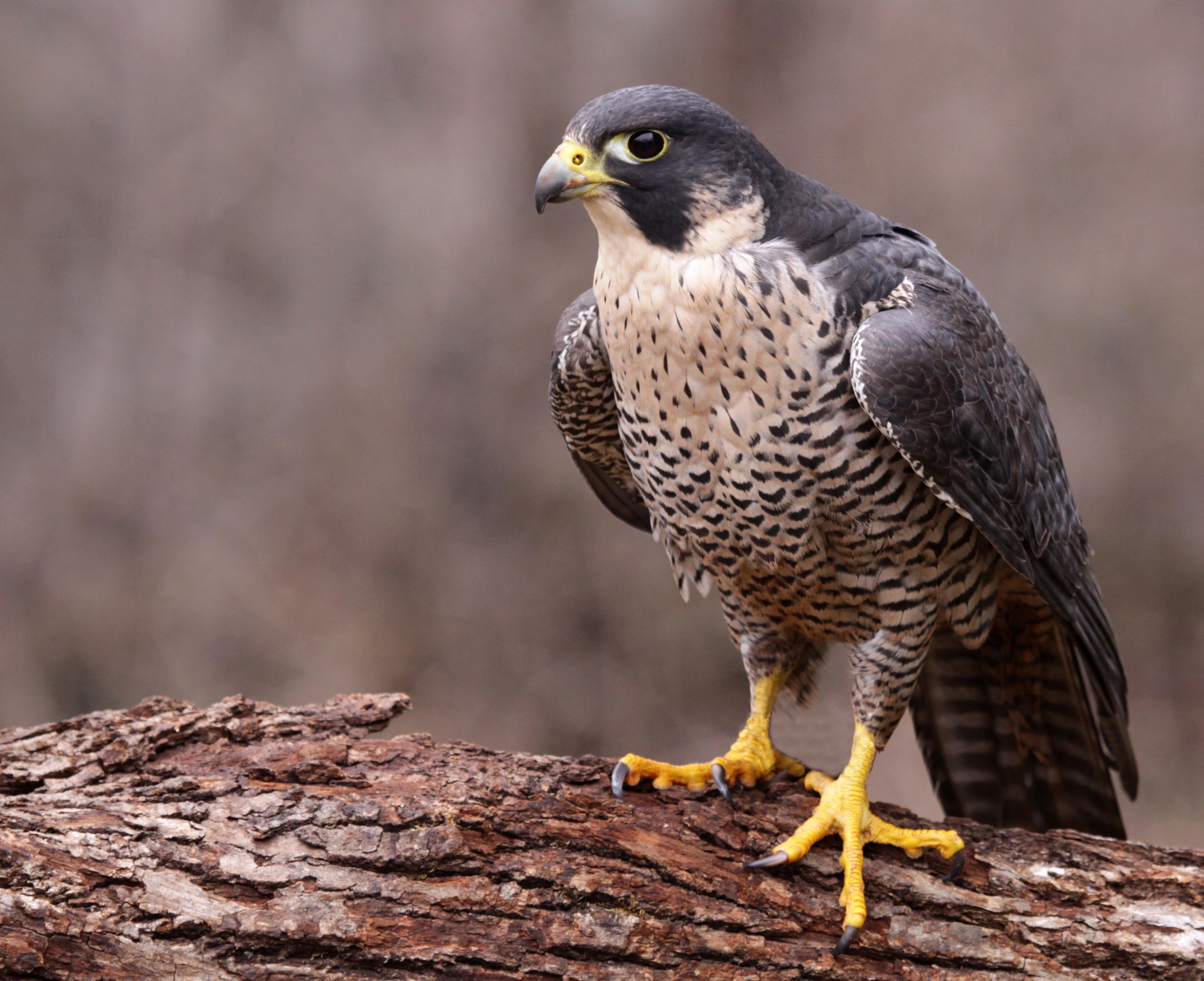
During hunting dives, these birds reach speeds over 240 miles per hour. Their specialized nostrils direct shockwaves away from their lungs, allowing them to breathe while traveling faster than a Formula One race car.
Their eyes have evolved to see clearly at speeds that would render most creatures blind. These aerial predators possess specialized cone-shaped channels in their nostrils that control airflow at high speeds.
Their third eyelid, called a nictitating membrane, protects and moistens their eyes while allowing perfect vision during high-speed dives. The birds’ enlarged visual cortex processes images at incredible speeds, enabling them to track prey moving at high velocities.
A recent study revealed they use the same intercepting flight paths as guided missiles.
Jellyfish’s Immortality
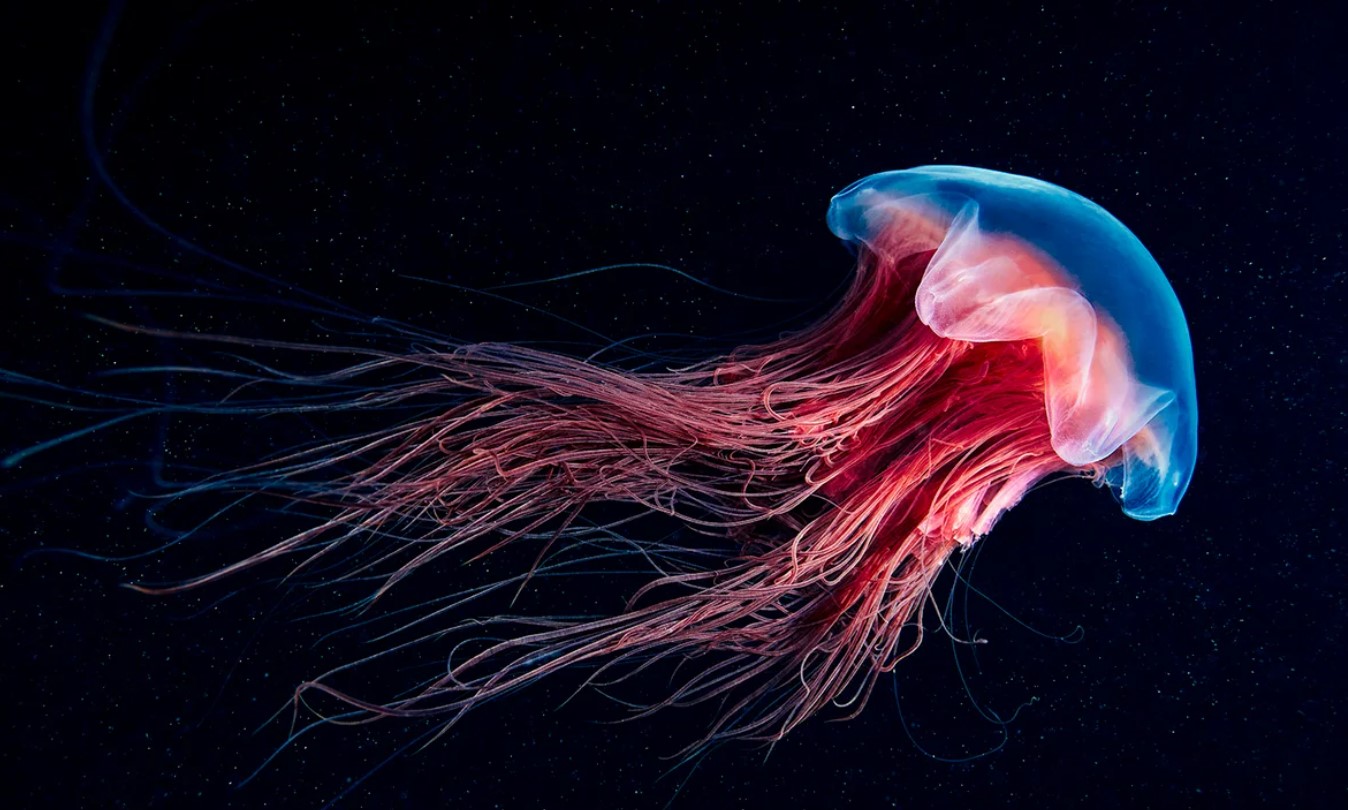
Turritopsis dohrnii, the immortal jellyfish, can revert from the adult stage back to juvenile form when stressed or injured. This biological immortality allows them to live forever, potentially barring predation or disease.
Scientists study these creatures, hoping to understand cellular regeneration and aging. Through a process called transdifferentiation, these jellyfish can transform their existing cells into different cell types, essentially recycling their bodies.
When stressed, they sink to the ocean floor, absorb their tentacles and bells, and transform back into polyps – their juvenile stage. This cycle can be repeated indefinitely.
Scientists have discovered that specific genes activated during this transformation process might hold keys to understanding human aging and cancer.
African Elephant’s Seismic Communication
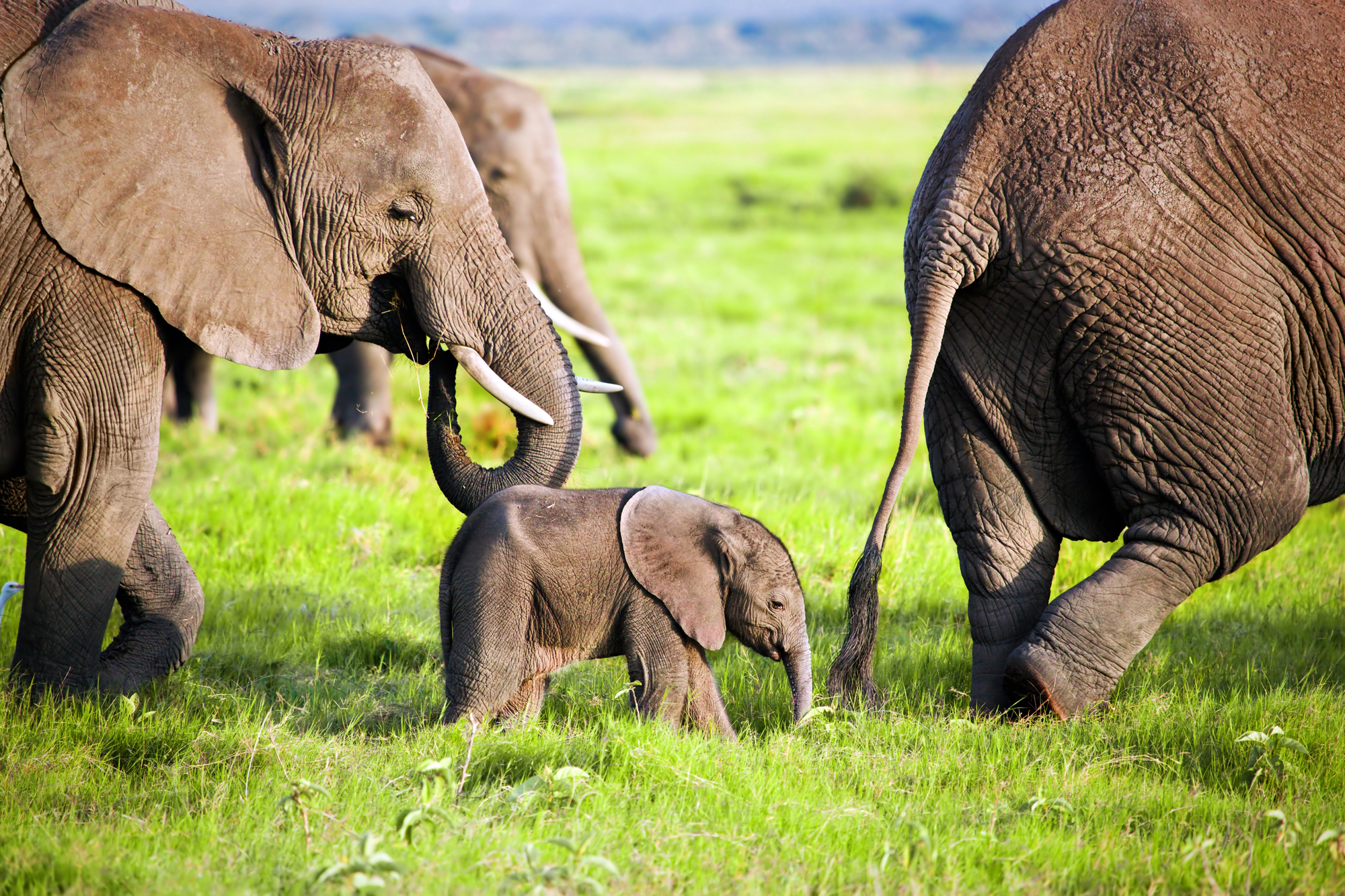
Elephants communicate through vibrations created by stamping the ground, which travels faster than sound through the soil. Other elephants detect these messages through sensitive nerve endings in their feet and trunks.
This allows them to communicate over distances of up to several kilometers. Recent research revealed elephants also use their body fat to amplify these seismic signals.
Their massive feet contain specialized fat pads that help conduct vibrations to sensitive nerve endings. They can detect seismic signals from storms up to 150 miles away and use this ability to find water sources.
Different types of foot stomps convey different messages, creating a sophisticated underground communication network.
Like Go2Tutors’s content? Follow us on MSN.
Octopus Camouflage
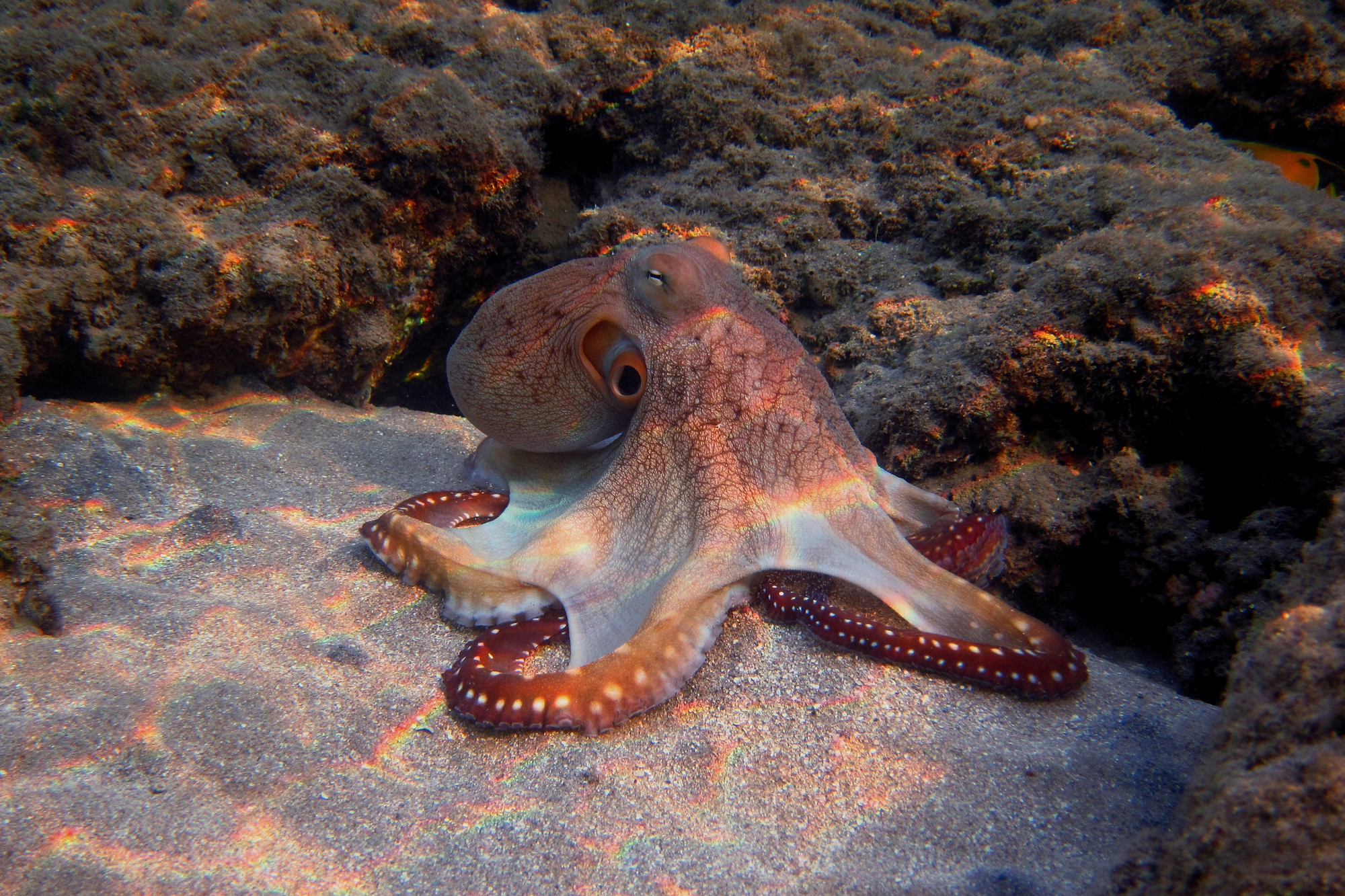
Octopi can change both color and texture in a fraction of a second to match their surroundings. Their skin contains specialized cells called chromatophores that expand and contract to reveal different pigments.
They can also manipulate the texture of their skin to mimic rocks, coral, or seaweed. Each chromatophore contains elastic sacs full of pigment controlled by tiny muscles.
An octopus’s skin contains millions of these cells, along with iridophores (reflective plates) and leucophores (white spots). Their ability to match textures comes from special muscles that can transform smooth skin into spikes and ridges.
Even more remarkably, octopi can achieve these transformations despite being colorblind, leading scientists to suspect they might be able to sense color through their skin.
Desert Ant’s Navigation
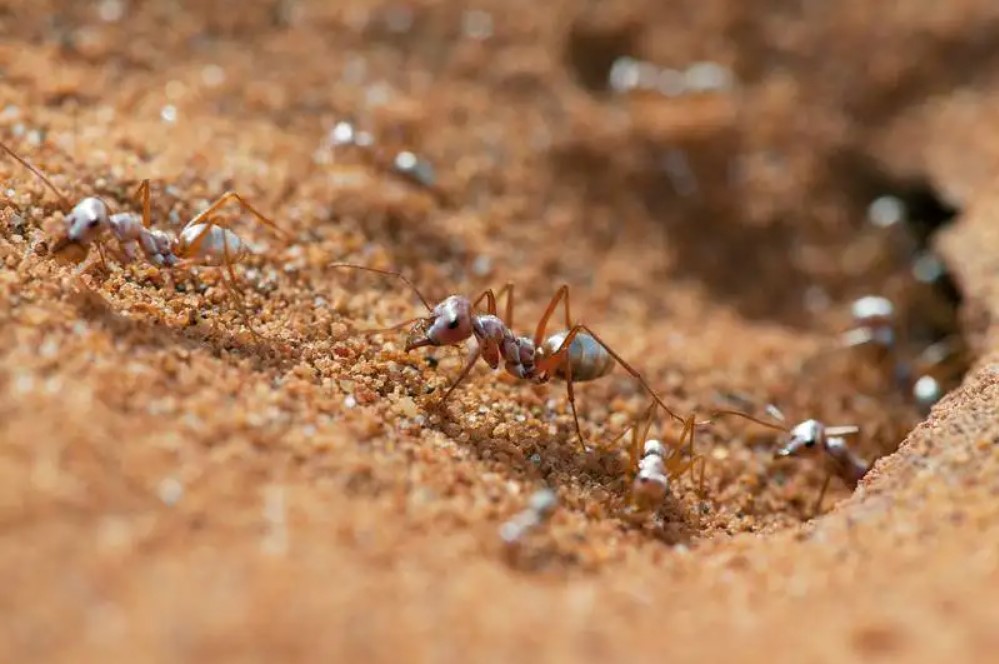
Saharan silver ants navigate vast distances across featureless deserts using polarized light patterns and counting their steps. They maintain an internal pedometer so that they can track their location even while walking backward and dragging food.
Their silver hairs reflect heat, allowing survival in temperatures that would kill most insects. These ants possess specialized eye structures that detect patterns in polarized sunlight, creating a natural GPS.
Their bodies are covered in uniquely shaped silver hairs that reflect up to 97% of solar radiation and help them survive in temperatures up to 158°F (70°C). Scientists discovered they can precisely count their steps using specialized neural networks, resetting this count on each return journey.
Hummingbird’s Metabolic Marvel
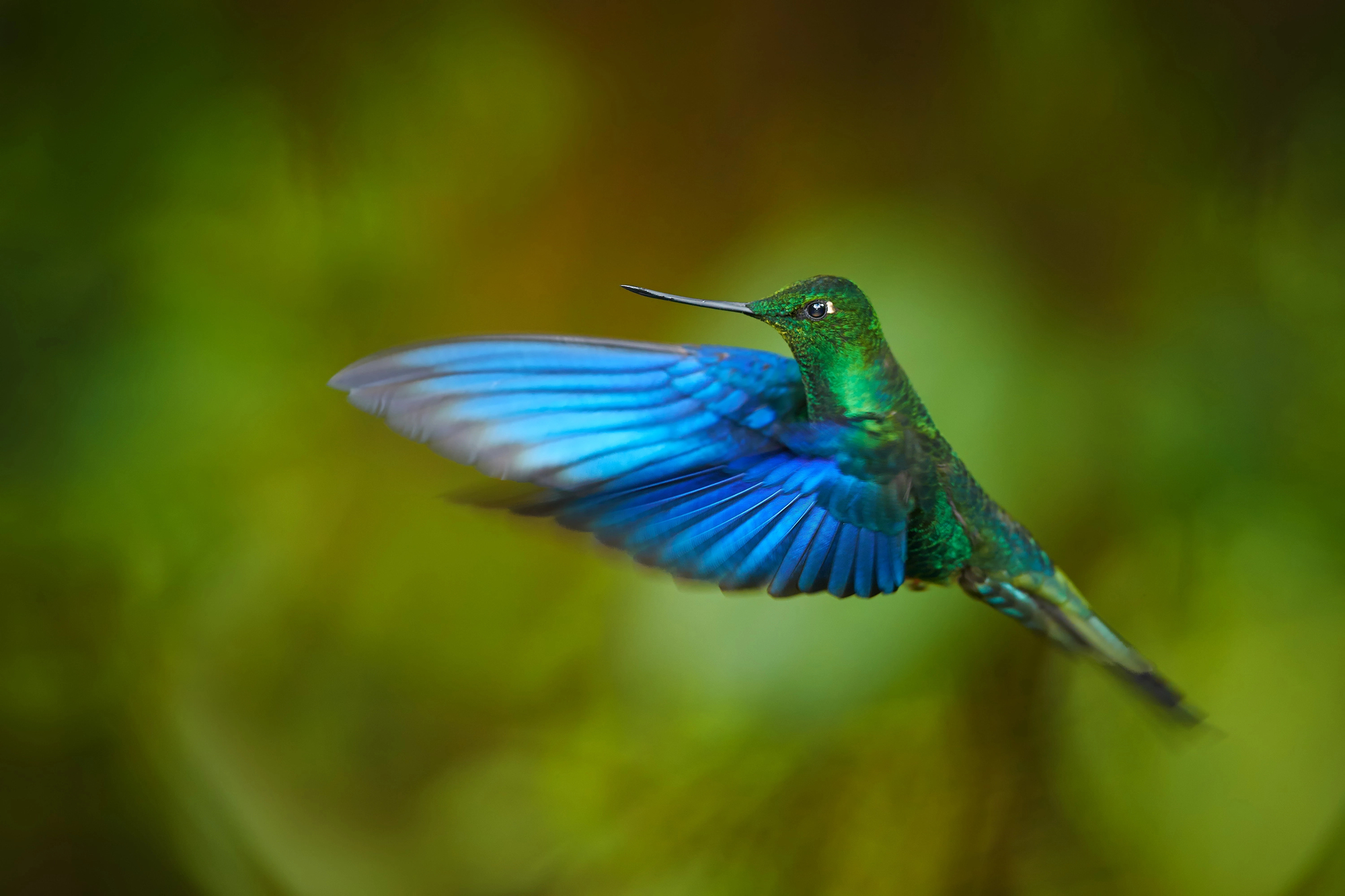
These tiny birds have the highest metabolic rate of any animal, with heart rates exceeding 1,200 beats per minute during flight. They’re the only birds that can fly backward and hover for extended periods.
At night, they enter a state of torpor, lowering their metabolism to 1/15th its normal rate to survive without feeding. A hummingbird’s heart can beat up to 21 times per second during flight, and they breathe up to 250 times per minute.
Their wings move in a figure-eight pattern, enabling them to hover and fly in any direction. During torpor, their body temperature can drop from 104°F (40°C) to near ambient temperature, and their heart rate slows to 50 beats per minute.
Their tongues work through capillary action rather than sucking, allowing them to lap nectar up to 20 times per second.
Like Go2Tutors’s content? Follow us on MSN.
Spider Silk’s Strength
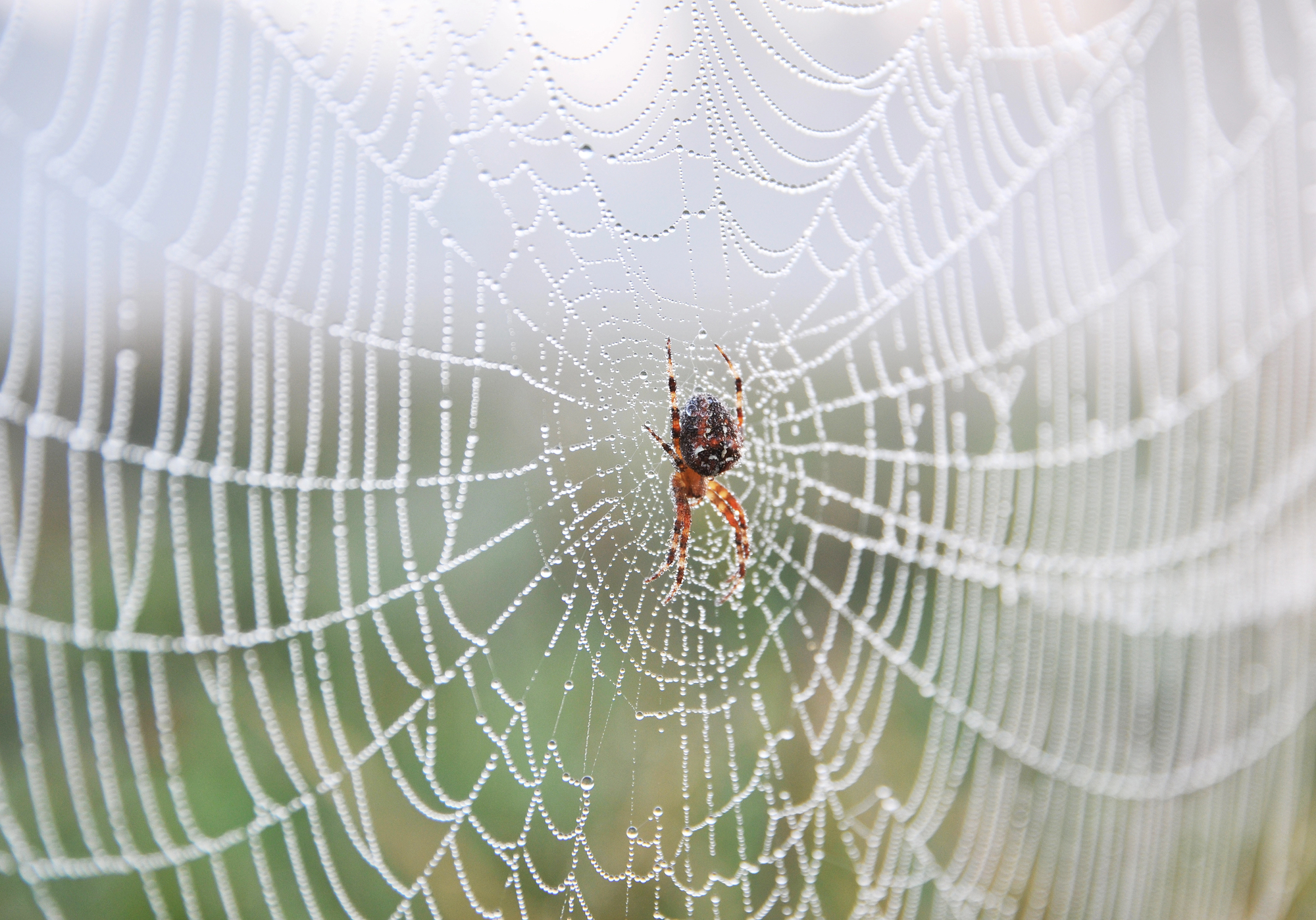
Weight for weight, spider silk proves stronger than steel and more elastic than rubber. Some spiders create different types of silk for different purposes, from sticky capture spirals to strong draglines.
Scientists still cannot fully replicate this remarkable material despite decades of research. Spiders can produce up to seven different types of silk, each with unique properties.
The strongest type, dragline silk, can absorb three times more energy before breaking than Kevlar. Spider silk achieves its strength through complex protein structures that form both crystalline and amorphous regions.
Some spiders can even adjust their silk’s properties while spinning, creating customized threads for specific purposes.
Salmon’s Magnetic Mapping
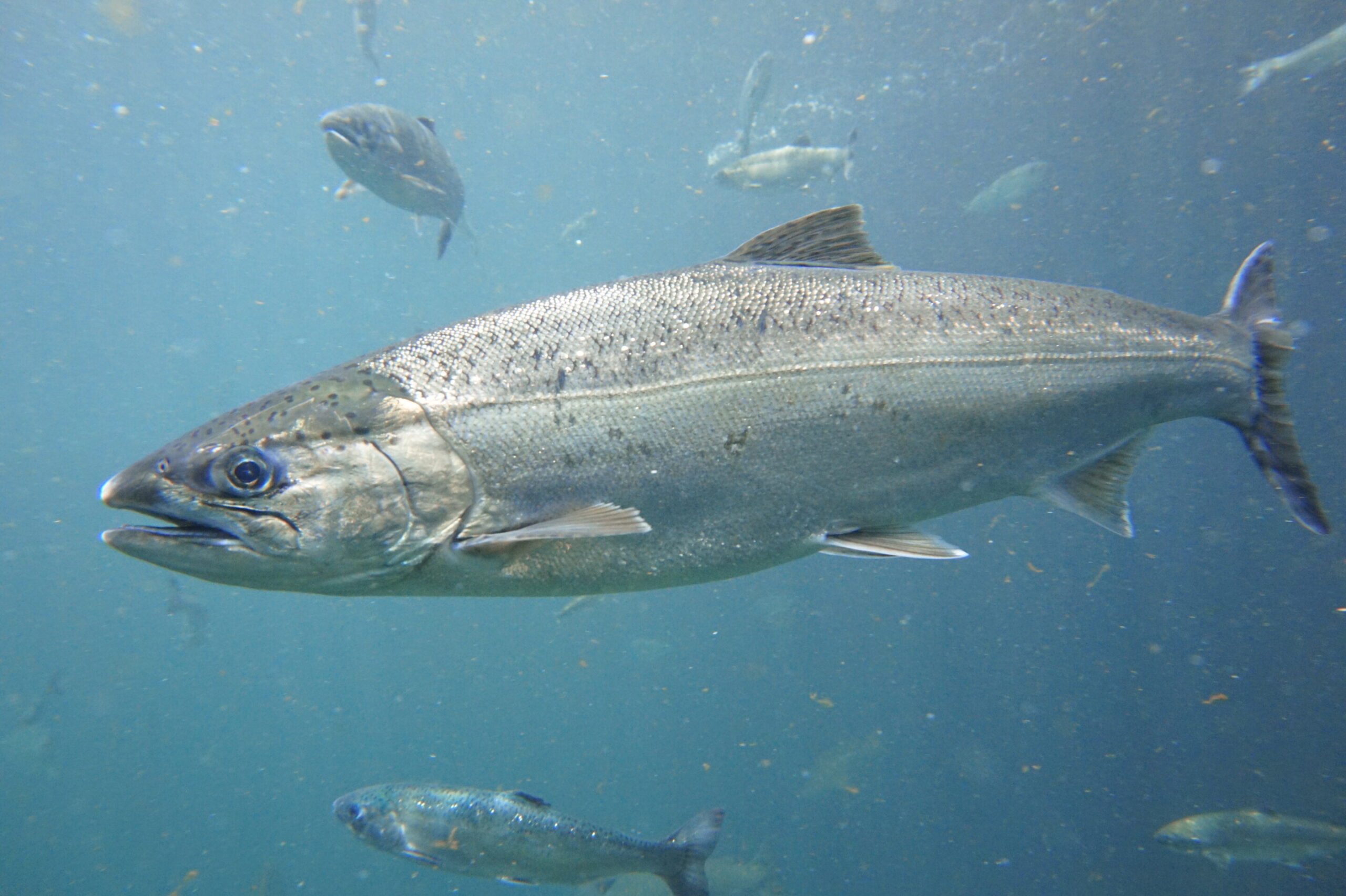
Pacific salmon navigate thousands of miles through the open ocean using Earth’s magnetic field as a map. They detect subtle variations in the magnetic field to determine their latitude and longitude, allowing them to return to their natal streams with remarkable precision.
These fish possess specialized cells containing magnetite crystals that act like tiny compasses. They imprint on the unique magnetic signature of their birthplace and can detect changes in magnetic intensity as small as 0.05% of Earth’s magnetic field.
Recent studies showed they also use the sun’s position and water chemistry cues as backup navigation systems.
Bombardier Beetle’s Chemical Weapon
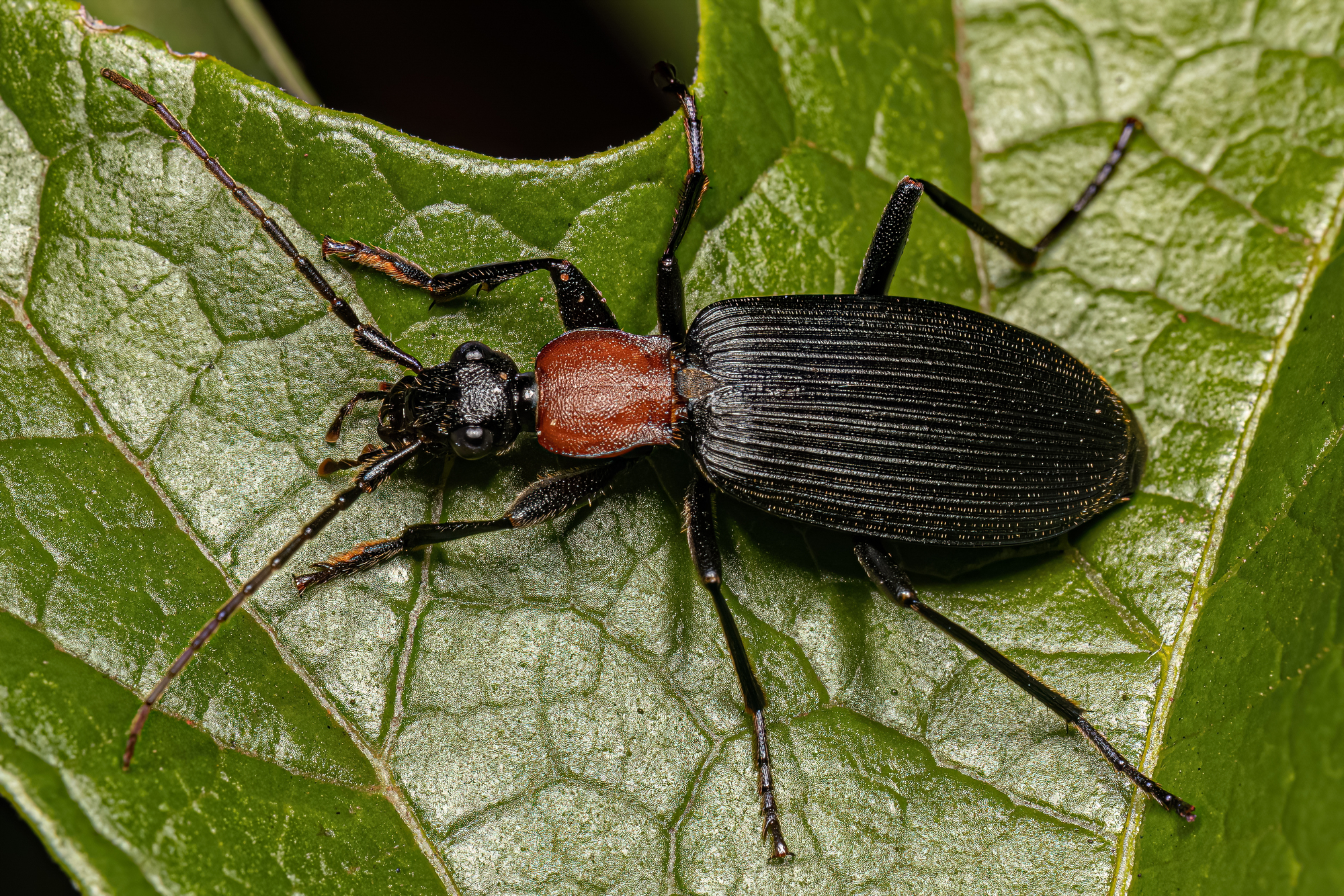
These insects create explosive chemical reactions inside their bodies, spraying boiling, caustic liquid at attackers. They mix separate chemicals in a specialized chamber, precisely controlling the reaction to avoid harming themselves.
The spray reaches temperatures near boiling point and shoots out at high speed. The beetle stores two separate chemicals, namely hydrogen peroxide and hydroquinones, in different chambers.
When threatened, it mixes these with catalysts in a reinforced reaction chamber, creating an explosive reaction that can be aimed in any direction. The spray exits in rapid pulses (up to 500 per second) at temperatures of 212°F (100°C), with enough force to stun or kill potential predators.
Like Go2Tutors’s content? Follow us on MSN.
Wood Frog’s Freeze Tolerance
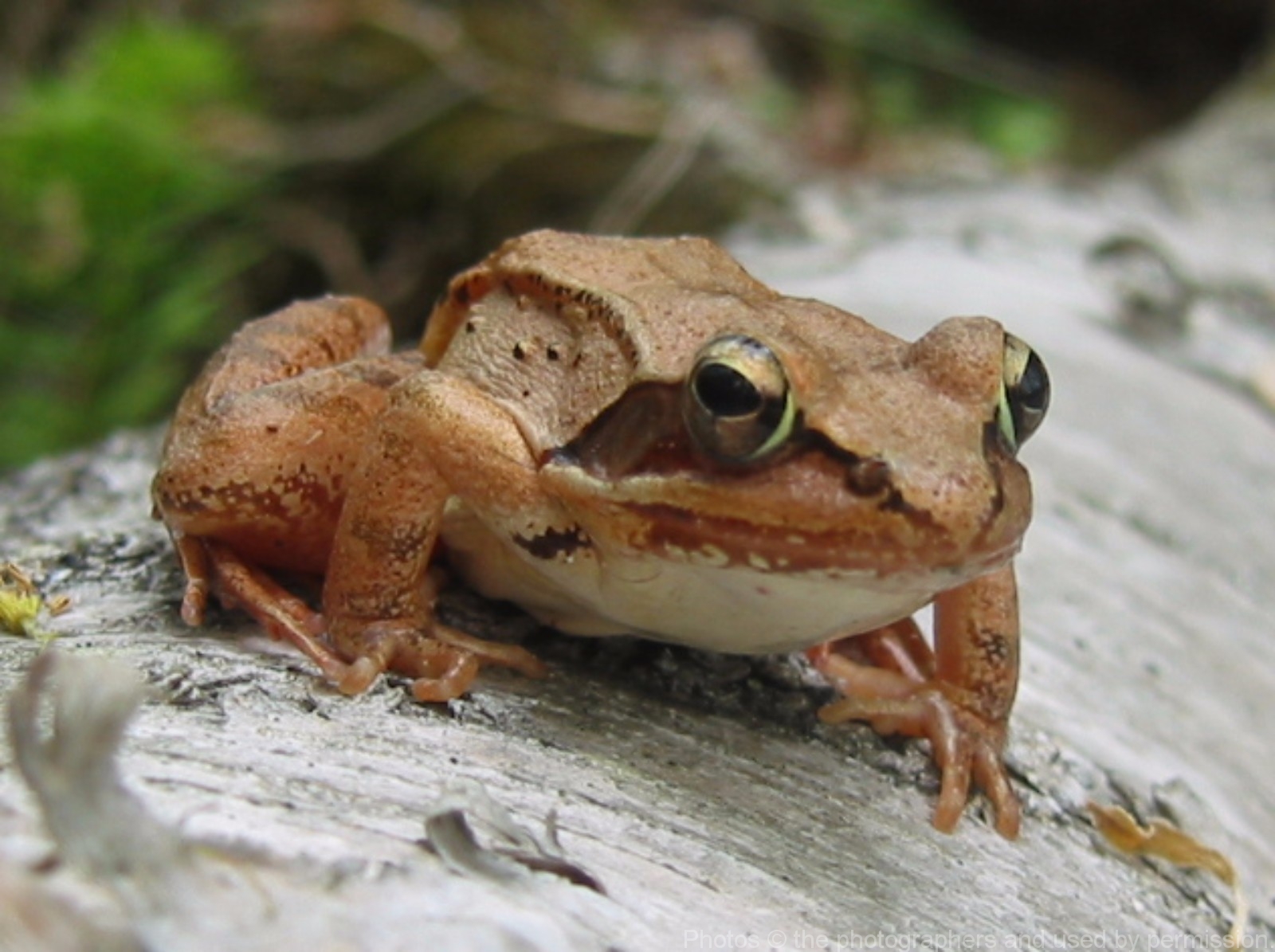
During winter, wood frogs allow their bodies to freeze solid. Their hearts stop beating, and ice crystals form between their cells.
Special proteins and glucose prevent cellular damage during freezing, allowing them to thaw and resume normal function when spring arrives. These frogs can survive having up to 65% of their total body water freeze solid.
Their liver produces large amounts of glucose, which acts as a natural antifreeze, protecting vital organs and cell membranes. They can endure multiple freeze-thaw cycles within a single winter, and their hearts can restart beating even after being completely frozen.
Scientists study these frogs, hoping to develop better organ preservation techniques for transplants.
Gecko’s Gravity Manipulation
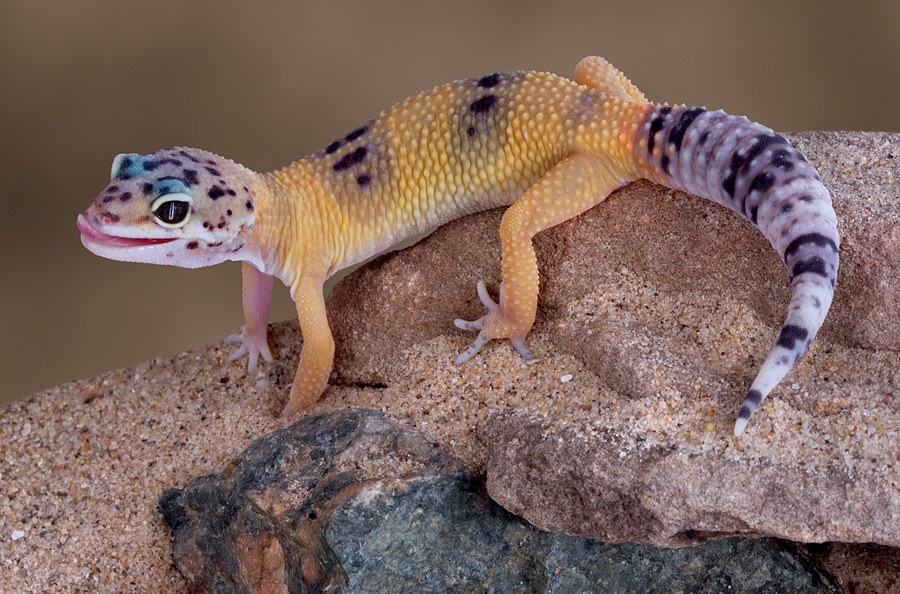
Geckos’ toe pads contain millions of microscopic hair-like structures that create molecular bonds with surfaces, allowing them to climb smooth vertical walls and even walk upside down on ceilings. They can support their entire body weight with a single toe and easily detach each foot by peeling their toes backward.
Each gecko toe pad contains hundreds of thousands of setae – microscopic hair-like structures that split into even tinier branches called spatulae. These spatulae create van der Waals forces – weak molecular bonds that become incredibly strong when multiplied across millions of contact points.
A gecko can attach and detach its toes in milliseconds and maintain its grip even on molecularly smooth surfaces. This adhesion technology has inspired new types of adhesives and climbing robots.
Chameleon’s Ballistic Tongue
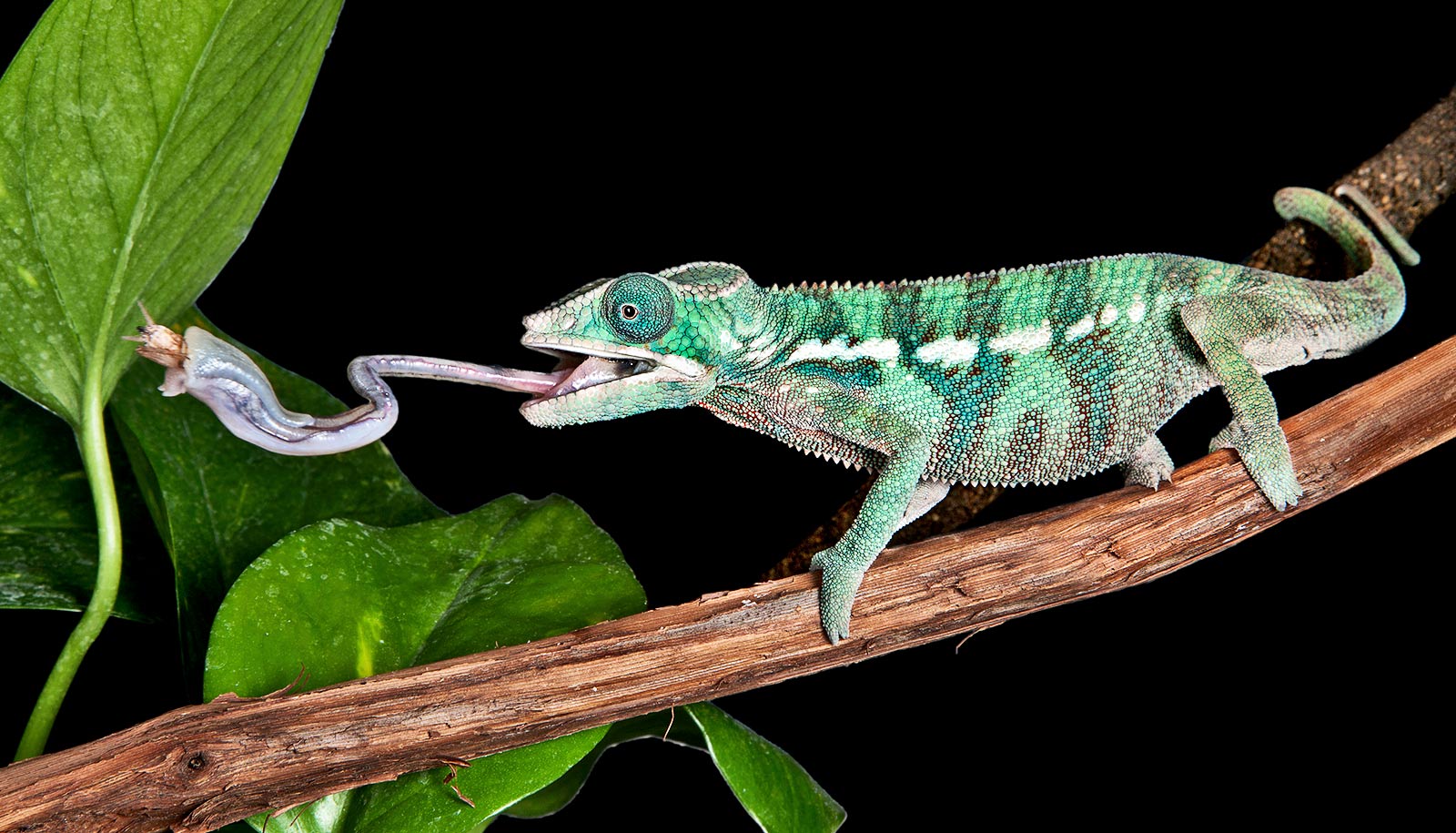
These reptiles possess nature’s fastest accelerating movement, with their tongues launching at prey in under 0.07 seconds. A chameleon’s tongue can extend to twice its body length and accelerate from 0 to 60 mph in a hundredth of a second – achieving acceleration 264 times greater than gravity.
The secret lies in a unique elastic collagen tissue that acts like a biological catapult. When ready to strike, the chameleon’s tongue muscles compress this tissue, storing energy like a coiled spring.
Upon release, the tongue launches with such force that it would kill the chameleon if not for specialized shock-absorbing muscles and tissues in its throat. High-speed cameras reveal the tongue tip forms a suction cup millisecond before impact while rapid-contracting muscles snap prey back to the mouth.
Scientists studying this mechanism have developed new designs for robotic grippers and ultra-fast mechanical systems.
Nature’s Research and Development

Through millions of years of evolution, nature has developed capabilities that human technology still cannot match. These remarkable adaptations remind us that while humans may dominate the planet, we’re far from being the most capable species in many respects.
Each of these creatures demonstrates solutions to challenges that human engineers and scientists continue studying, hoping to unlock secrets that could revolutionize everything from medicine to materials science. Their abilities not only showcase nature’s ingenuity but also highlight how much humans still must learn from the natural world.
As technology advances, researchers increasingly turn to these biological marvels for inspiration, developing new materials, medicines, and technologies based on nature’s time-tested designs. The future of human innovation may well depend on our ability to understand and adapt these remarkable natural capabilities.
More from Go2Tutors!

- Famous Battles: How Much Do You Really Know About U.S. History?
- Top 5 Most Important Skills, According To Harvard Business School
- How Well Do You Know 90s Pop Culture? Take the Quiz
- Master the Art of Public Speaking with These Expert Tips
- Think You Know Capitals? Put Your Knowledge to the Test
Like Go2Tutors’s content? Follow us on MSN.



